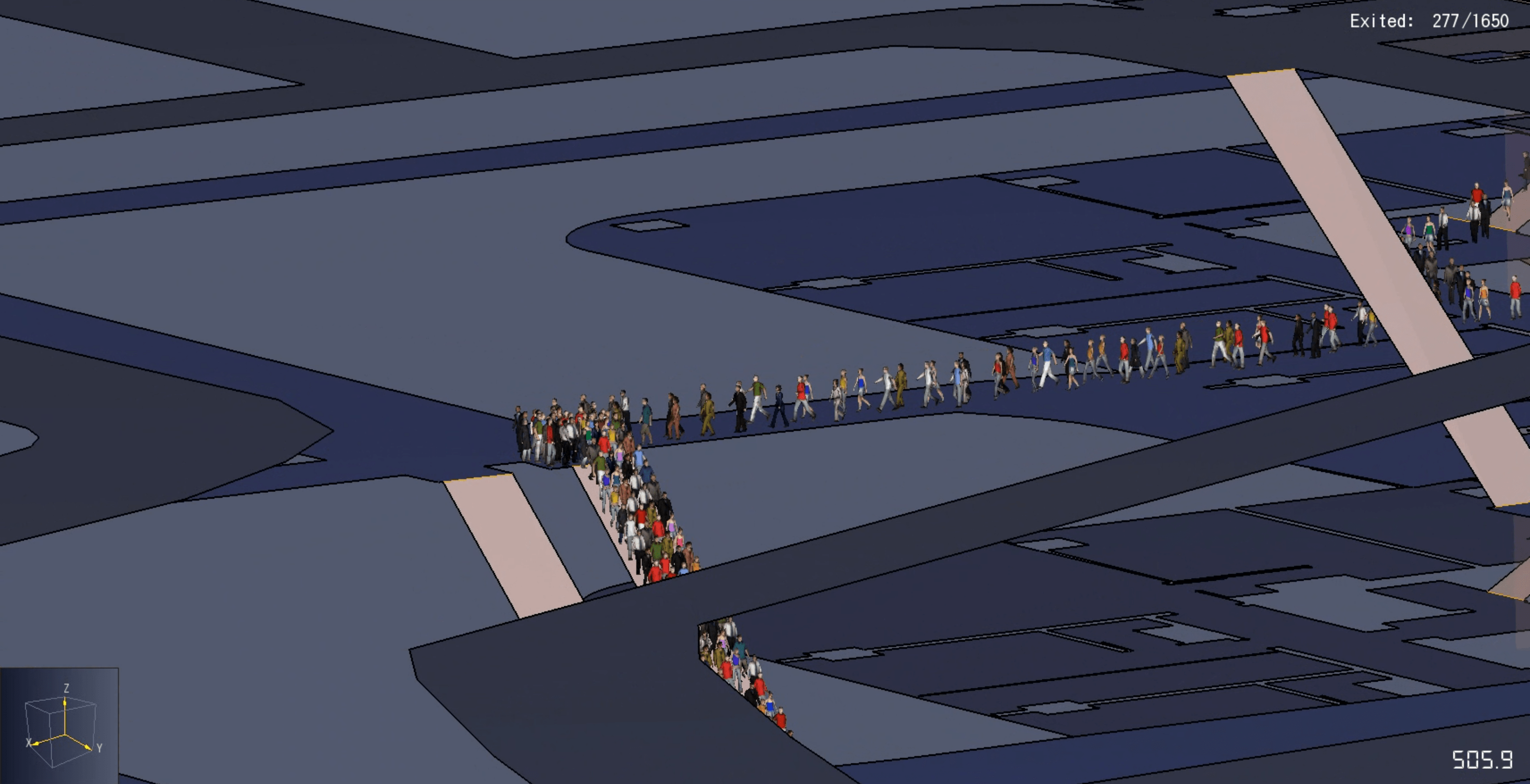Evacuation Analysis
Calculating how long a building can be evacuated in an emergency is an important consideration for human life during building design. Analytical methods are available to calculate in fire codes and standards (SFPE, NFPA, BS, DIN, etc.). These codes and standarts set minimum requirements for the safe design of multi-storey buildings. However, additional safety measures are often required to reduce the risks associated with the complexity of such buildings and potential difficulties in fire fighting and rescue operations. Also, recent events such as the evacuation of the World Trade Center have raised awareness. Inquiries about the adequacy of existing emergency procedures for buildings have increased. In order to evacuate multi-storey buildings, inquiries were made as to which output components (eg stairs, elevators, shelters, sky bridges, etc.) were most appropriate. What emergency procedures should be used to improve evacuation efficiency? These questions do not have simple answers and usually depend on the characteristics of the building under investigation.

In the analysis studies, modeling of each room, zoning, defining the number of users and their many features (shoulder width, walking speeds, behavior types) is calculated by simulating how many minutes the place can be evacuated. The consistency of performance-based calculations has been reported in the literature with many case studies conducted for validation and verification so far. With this approach, it is quite possible that the architectural design can detect the critical crowd zones that may occur with quick and simple changes, and see the improvement of the results by making simple arrangements in the corridors that will cause clogging.






